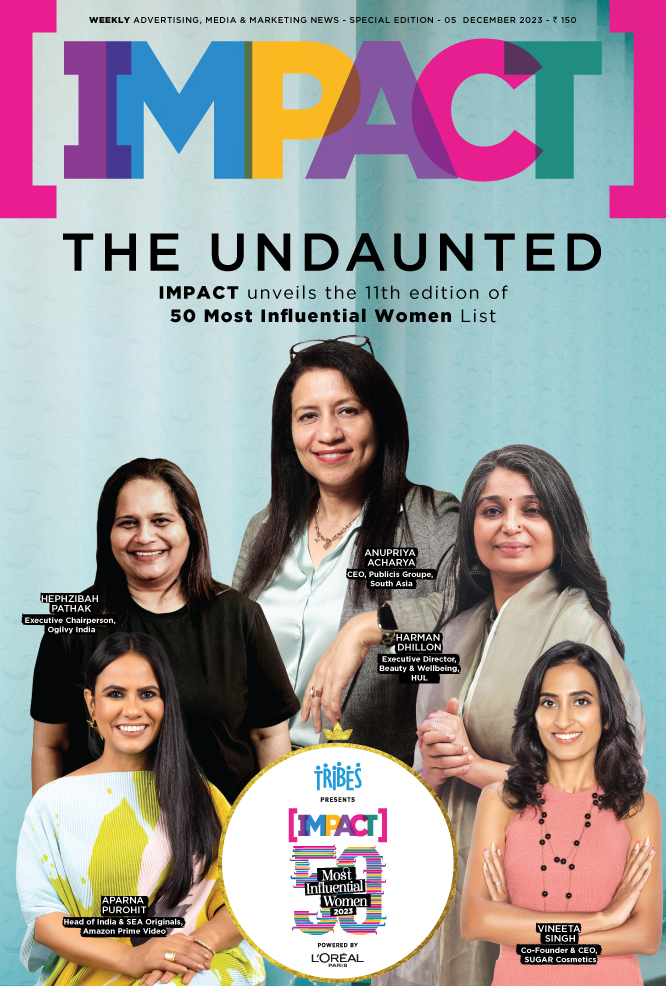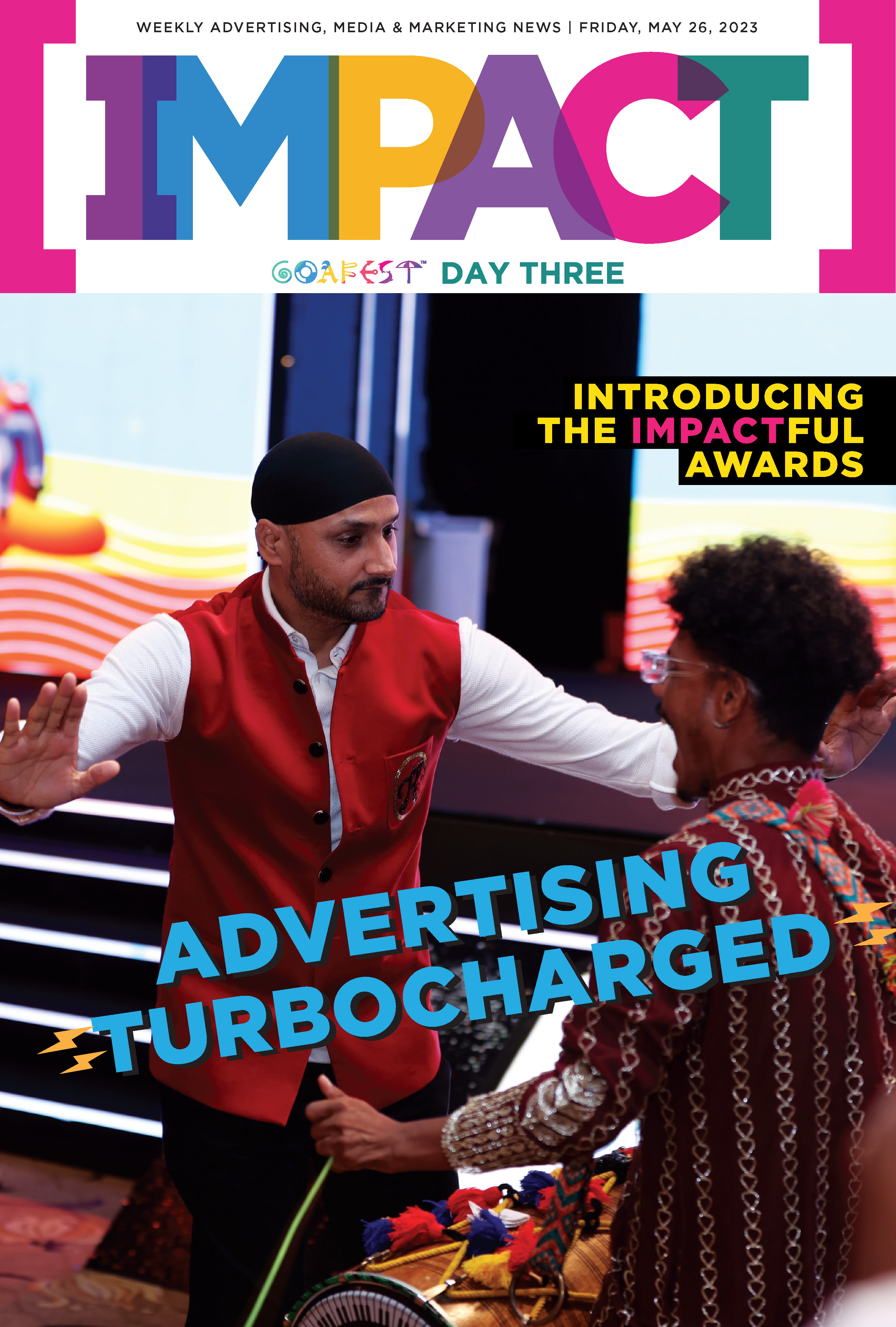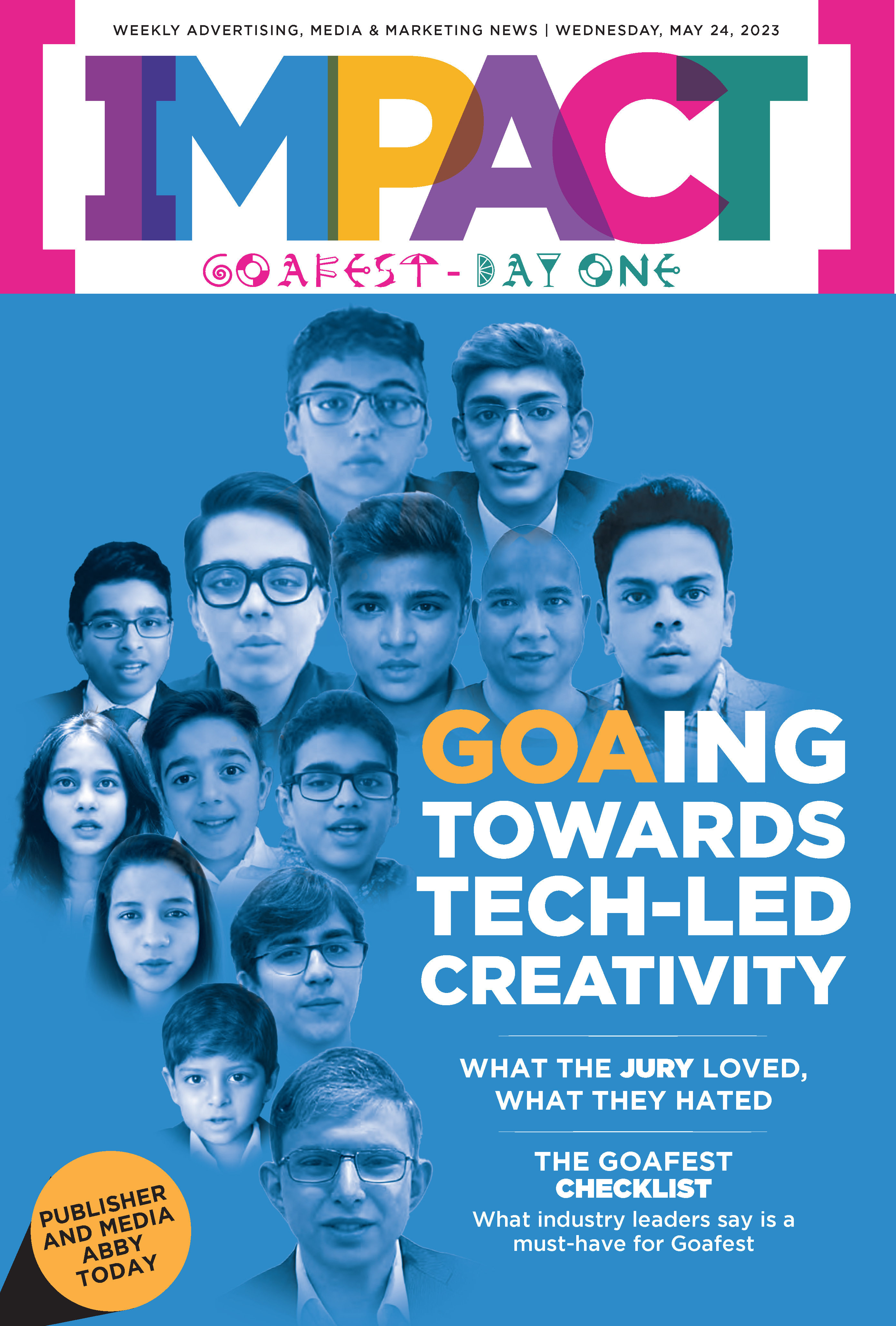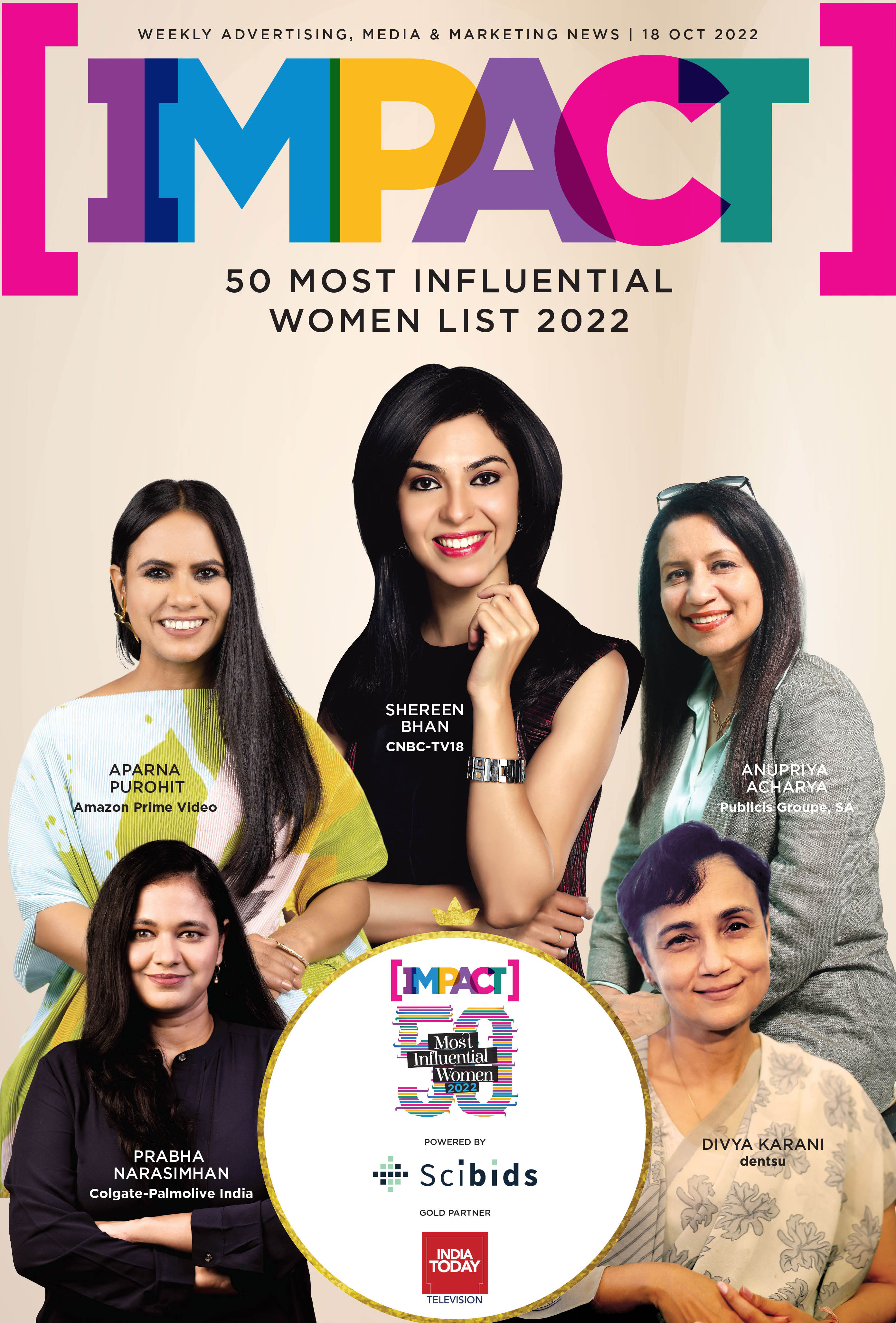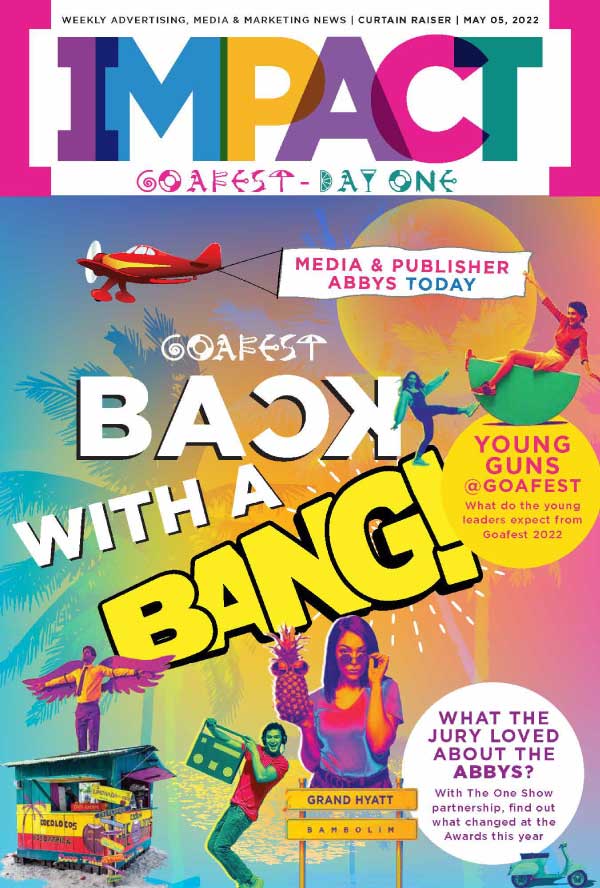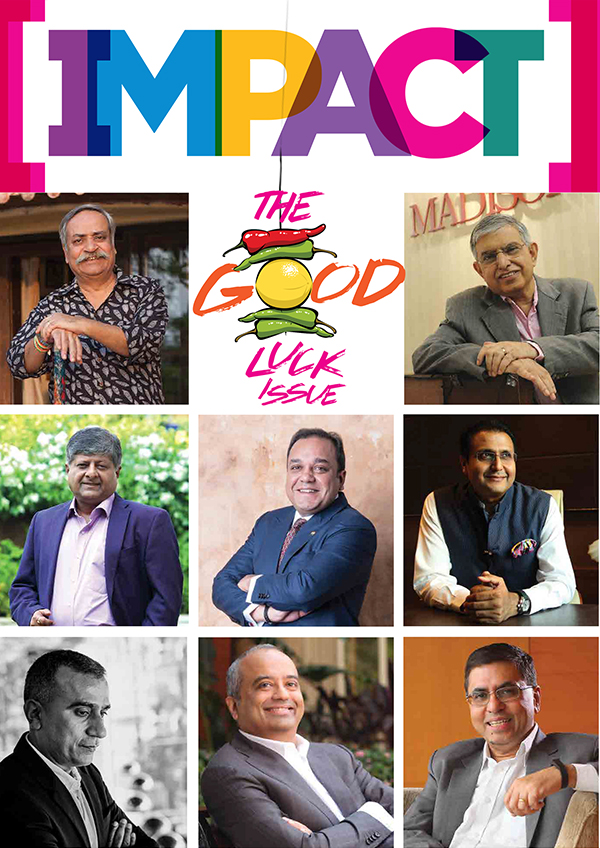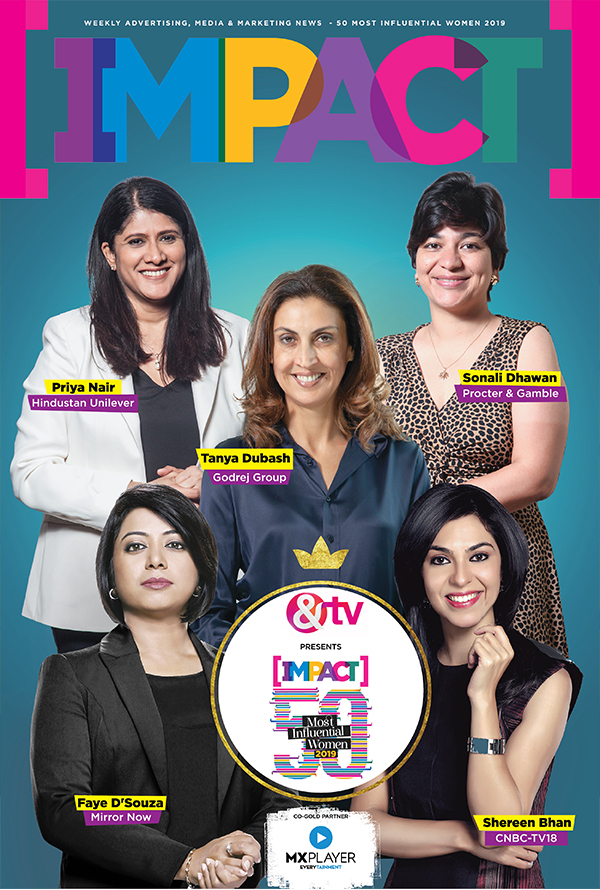At a time when AI is rewriting the economics of advertising, bringing production costs close to zero, shrinking timelines from weeks to hours and aiding short consumable content, Ching’s Secret seems to have gone completely against the tide. Top media outlets have reported that the brand spent Rs 150 cr on a 9-minute cinematic ad directed by Atlee, starring Ranveer Singh, Bobby Deol, and Sreeleela, a campaign that looks, feels, and talks like a full-blown Bollywood film.
The Rs 150 cr figure has dominated headlines even before the full ad was released by the brand, but many industry insiders quietly admitted that the real number seems to be far lower. Even factoring in the talent cost of three major stars, a top-tier director, high-end production, post-production, and the media push across platforms, the figure would realistically hover around Rs 50 cr, still massive by ad standards.

 Sambit Mohanty, Creative Head & EVP, Bangalore, McCann Worldgroup highlights, “This ad certainly doesn’t feel like a Rs 150 cr production - even if you include the star fees. It seems like a highly inflated number to generate PR buzz.”
Sambit Mohanty, Creative Head & EVP, Bangalore, McCann Worldgroup highlights, “This ad certainly doesn’t feel like a Rs 150 cr production - even if you include the star fees. It seems like a highly inflated number to generate PR buzz.” Shahnawaz Ali, Director, The Bigger Picture Films adds, “Rs 150 cr is usually the budget for an epic film, not a 9-minute-ad. Also, no way it looks like a Rs 150 cr ad film.”
Shahnawaz Ali, Director, The Bigger Picture Films adds, “Rs 150 cr is usually the budget for an epic film, not a 9-minute-ad. Also, no way it looks like a Rs 150 cr ad film.”
The narrative of a ‘Rs 150 cr ad film’ has given the brand instant virality, earned media worth crores, and the perception of scale, without necessarily having to spend that much on ad placement. Interestingly neither the brand or the production house came on record to say that it was a Rs 150 cr film, even as the country blindly took to social media to find out what this magnum opus, that everybody is talking about, possibly contains. The brand on their social media pages then claimed to have received 250 million views for the film in less than five days.

 So to solve the Rs 150 cr mystery, IMPACT reached out to the man behind the campaign, Ashiish V Patil, Chief Storyteller, Co-founder & CEO, Isspeshal StratCon LLP, who conceptualised the film. In an exclusive conversation with IMPACT, Patil clarified that the reported Rs 150 cr figure was highly exaggerated, and that the actual budget was only a fraction of that amount. IMPACT also reached out to Capital Foods Pvt. Ltd., the parent company of Ching’s Secret, for an official comment via email, but did not receive a response from the brand at the time of filing the story.
So to solve the Rs 150 cr mystery, IMPACT reached out to the man behind the campaign, Ashiish V Patil, Chief Storyteller, Co-founder & CEO, Isspeshal StratCon LLP, who conceptualised the film. In an exclusive conversation with IMPACT, Patil clarified that the reported Rs 150 cr figure was highly exaggerated, and that the actual budget was only a fraction of that amount. IMPACT also reached out to Capital Foods Pvt. Ltd., the parent company of Ching’s Secret, for an official comment via email, but did not receive a response from the brand at the time of filing the story.
Which raises the first real point of intrigue: did Ching’s Secret just pull off the smartest publicity coup in years?

Against the Cost-Cutting Tide
Even though the Rs 150 cr tag doesn’t hold true and is just another PR stunt, a spend even touching Rs 50 cr, as per what industry insiders have told us, makes the Ching’s Secret campaign one of the most ambitious in recent times. And yet, it isn’t an outlier. Despite AI slashing production costs and automating creative workflows, several brands are doubling down on scale and star power to cut through the clutter.
In the past year alone, we’ve seen Dream11’s ‘Aapki Team Mein Kaun’, a blockbuster ensemble campaign; Flipkart’s ‘Kuch Bhi Ho Sakta Hai’ Big Billion Days film; Myntra’s ‘Big Fashion Festival’ and ‘Be Extraordinary Every Day’ campaigns featuring multiple celebrities; Rungta Steel’s ad with Shah Rukh Khan, Ranbir Kapoor, and Alia Bhatt; and Ajio’s festive film ‘This Is How We Festival’, all multi-starrer, high-gloss productions made in an era where every penny counts for the marketer.
The pattern is clear: even as AI promises speed and savings, brands are increasingly investing in cinematic, celebrity-driven storytelling to stand out. In that sense, Ching’s Secret long-format ad isn’t an anomaly, it’s part of a growing wave of marketers betting that emotion, spectacle, and cultural recall still deliver better returns than algorithmic efficiency.

Nalinikanth Gollagunta, CEO, Automotive Division, M&M Ltd says, “AI helps us compress cost and personalise at scale, but a star-led, music-driven story can build distinctiveness that algorithms alone can’t. For example, with our recent campaign for our electric origin SUVs, the BE 6 and XEV 9e, we re-created the iconic song ‘Boom Boom’—in the voice of the versatile Sunidhi Chauhan—to fuse nostalgia with new-age energy. That cultural hook signaled the performance, style, and emotion our eSUVs stand for.”
With several brands slashing costs and streamlining production with AI, one would imagine that human-led, high-production advertising is a relic of the past. From DermiCool’s fully AI-generated DermiCool Warriors film and AJIO’s AI-created Great Fashion Price Crash campaign to ACKO’s AI-generated OOH visuals, the message from the industry seemed clear: automation is the future. And yet, Ching’s Secret chose to go the other way, dropping a nine-minute, multi-starrer spectacle that puts the spotlight squarely back on scale and cinematic storytelling.

Kedar Ravangave, Head of Marketing, Kotak Mahindra Bank whose brand has also experimented with AI campaigns recently says, “Across my stints at Marico, Amazon, and now Kotak, one thing has stayed true: efficiency builds reach, but emotion builds meaning. You can optimise a campaign, but you can’t algorithm your way into culture. Whether it was ‘Apni Dukan’ at Amazon, ‘Har Pal Fashionable’ for Amazon Fashion, or ‘Hausla Hai Toh Ho Jayega’ at Kotak, the common thread has been cultural storytelling that earns love, not just attention. AI has undoubtedly changed the economics of creativity; it allows brands to produce faster, cheaper, sharper. But big, human storytelling still does what machines can’t: it creates collective memory. The future isn’t AI or artistry, it’s AI funding the artistry.”
Amit Syngle, MD & CEO, Asian Paints highlights, “AI offers efficiency, and its capabilities can be put to good use to amplify the aspiration, credibility and immediate impact that high-profile celebrities and a good message bring, from a creative lens. However, for a category like home décor, which involves deeply emotional purchases, a realistic portrayal of stories and spaces that humanises the brand is crucial. AI is making giant strides, but it’s yet to solve this need. Partnering with a celebrity who has the potential to connect with consumers becomes a universal currency for high recall in a market like India, where we cater to both the masses and the classes. Thus, a strategic investment in celeb led communication ensures the quality and emotion to drive brand equity and success.”
But the economics are sobering. Even for a well-established brand, such high-level ad spends demand clear justification, not just in awareness or talkability, but in long-term brand equity.

Sooraj Balakrishnan, Head of Marketing & Associate Director, Acer India says, “Large-scale productions with multiple A-list celebrities and renowned directors are rare today. It naturally drives attention and PR buzz because of its sheer scale and ambition. High-value productions should act as strategic growth drivers, not one-time buzz generators. For such spends to be feasible, the campaign must have a scalable impact, helping the brand reach new audiences and reinforce its positioning over time.”
Ravangave notes that for a campaign like this to make sense, it must deliver the work of a Rs 1500 cr media burst, that is Rs 1500 cr in awareness, earned media, and brand love, driving cultural conversation, recall, and emotional pull that far outlasts its digital run. Ambika Sharma, Founder and Chief Strategist, Pulp Strategy says, “In an environment where AI is shrinking production timelines and standardising creative formats, a cinematic film reminds people that storytelling still has emotional weight. For long-format films like this, success is no longer measured by views alone. It’s about engagement quality, completion rates, sentiment analysis, and how the narrative drives organic chatter and search lift.”
Ambika Sharma, Founder and Chief Strategist, Pulp Strategy says, “In an environment where AI is shrinking production timelines and standardising creative formats, a cinematic film reminds people that storytelling still has emotional weight. For long-format films like this, success is no longer measured by views alone. It’s about engagement quality, completion rates, sentiment analysis, and how the narrative drives organic chatter and search lift.”

The Attention Test- 9 minute too long?
The media dynamics are equally tricky. Where does a nine-minute ad fit in today’s attention economy? Platforms like YouTube can technically host it, but discovery remains a challenge. Such content is not built for interruption but for discovery, audiences need to choose to watch it. That means the campaign must be marketed like a movie, not an ad: with trailers, teasers, behind-the-scenes clips, influencer chatter, and PR waves building up to the main drop. A big film doesn’t fail in production; it fails in distribution.
Agencies are measuring the success of long-format or high-spend campaigns today through attention, engagement and conversions. Varun Mohan, Chief Commercial Officer India, MiQ highlights, “Phase one measures attention quality and completion for the long film, plus search and social lift. Phase two tracks aided and unaided awareness, ad recall, and consideration. Phase three looks at assisted conversions during key commerce windows. Indian marketers are moving toward a unified framework to connect the measurement dots.”

 Anisha Iyer, CEO, OMD India says, “The savviest investment a brand can make isn’t in celebrity lineups or cinematic budgets – it’s in the enduring quality of its storytelling. Regardless of whether a campaign runs for 30 seconds or nine minutes, the constant remains: great stories never lose their power. Moreover, the measurement of a truly impactful campaign has evolved. The metrics may have shifted, but the principle hasn’t: when the story resonates, people stay. They watch, share, and carry the message further than any media plan can. Current trends may celebrate the quick scrolls of social media, but regardless of length or celebrity quotient, it’s still the well-crafted narrative that captures and stays with the modern audience.”
Anisha Iyer, CEO, OMD India says, “The savviest investment a brand can make isn’t in celebrity lineups or cinematic budgets – it’s in the enduring quality of its storytelling. Regardless of whether a campaign runs for 30 seconds or nine minutes, the constant remains: great stories never lose their power. Moreover, the measurement of a truly impactful campaign has evolved. The metrics may have shifted, but the principle hasn’t: when the story resonates, people stay. They watch, share, and carry the message further than any media plan can. Current trends may celebrate the quick scrolls of social media, but regardless of length or celebrity quotient, it’s still the well-crafted narrative that captures and stays with the modern audience.”
Attention span, too, is a misleading metric. The problem isn’t that people won’t watch long content, they binge for hours when the story is good, but that they won’t stay for something that doesn’t move them. Audiences don’t reject long ads, they reject boring ones. If the storytelling delivers emotional pay-off, the 9-minute length could work; if it’s self-indulgent or overtly product-heavy, viewers will scroll away in seconds.
Brand Consultant Ashok Lalla says, Ching's has for long used a Bollywoodesque-like feel to its ads featuring Ranveer Singh, and not used him merely as a celeb presence in its ads. Longer-than-ad length content is now common, especially online. Making such content pieces entertaining is one way to actually get people to watch the content, rather than abandon it in a few seconds. Audiences watch what interests them, and sometimes it's an ad. Indian audiences are avid consumers of Bollywood and regional cinema, and so Chings seems to be betting on this for its own content's pickup."

Creativity’s New Power Play
Beyond creative ambition and platform fit, the move also signals a structural shift in marketing’s ecosystem. As brands like Ching’s Secret bypass traditional agencies and blur the lines between creativity, execution, and strategy, the old order is being redefined.
Unlike most brands that turn to established creative agencies for big-budget, multi-starrer campaigns, Ching’s Secret has charted its own path, partnering with Isspeshal StratCon, a strategy and storytelling consultancy led by Ashiish V Patil, to spearhead both the creative and conceptual direction. A former YRF executive, Patil has been associated with Ching’s Secret for over 11 years, shaping the brand’s quirky, high-energy campaigns through the years.
Sambit however shares, “As this Ching’s ad shows, producing a ‘mega-budget-9-minute film’ with a star actor and director isn’t a guarantor of success (the metric for success being storytelling that’s engaging and entertaining.) I could hardly sit through this film because of how cheesy it was and it only reaffirmed my belief that nothing can beat the power of a story well told. Brands therefore have to ensure that whoever they collaborate with - creative agency or filmmaker - delivers the goods when it comes to making a compelling and engaging story. Because that’s what will ultimately engage an audience - not its length or budget.”

Abhijat Bharadwaj, Chief Creative Officer, Dentsu Creative Isobar highlights, “Not every brand will want or need a marquee filmmaker. For those that do, keep the split clear. The filmmaker brings the art, the look, the performance. The agency owns the strategy and the key message, and makes sure the film fits the brand and delivers results.”
Production studios today aren’t just shooting ads, they’re conceptualising, scripting, casting, and distributing them. A film of this scale reflects that evolution. The challenge lies in integrating brand purpose seamlessly into entertainment, ensuring the film doesn’t end up as a vanity showcase detached from consumer relevance.

Shahnawaz says, “With the growing competition now, clients have also started to reach out to production houses directly because they feel they’ll get a variety of ideas. Earlier, agencies used to give scripts to production houses and they used to work around it, but now, such opportunities allow us to come up with ideas and offer something new. So, the role is evolving.”
For most, Ching’s Secret campaign feels like a test case for where advertising is headed, two parallel economies coexisting. One is powered by AI-driven efficiency: fast, cheap, sharp content optimised for performance. The other is fuelled by emotion, craft, cultural ambition and expense. The smartest brands will balance both.

 Sandeep Goyal, Managing Director, Rediffusion says, “Honestly, it is a classic case of ‘have money, will burn’. The ad must have cost a bomb, and the brand bought front page ads in TOI too to promote the creative - so a colossal amount of money was spent with little or nothing to show for the extravaganza. The ad has generated media interest and social media chatter but I don’t think it has created any buyers for the brand. Ads such as these are ego trips - a huge desire to get noticed. Short term, yes, it works but the idea itself doesn’t have long legs.”
Sandeep Goyal, Managing Director, Rediffusion says, “Honestly, it is a classic case of ‘have money, will burn’. The ad must have cost a bomb, and the brand bought front page ads in TOI too to promote the creative - so a colossal amount of money was spent with little or nothing to show for the extravaganza. The ad has generated media interest and social media chatter but I don’t think it has created any buyers for the brand. Ads such as these are ego trips - a huge desire to get noticed. Short term, yes, it works but the idea itself doesn’t have long legs.”

For now, it’s clear that Ching’s Secret has succeeded in one thing, grabbing the nation’s attention. Whether the ad sells more noodles or simply feeds the brand’s myth will depend on what viewers choose to do after those nine minutes: share it, skip it, or simply forget it. In the age of AI and economizing, that might just be the most risky gamble for the brand.
 ‘The Ching’s Secret ad didn’t cost Rs 150 cr, only a fraction of that’
‘The Ching’s Secret ad didn’t cost Rs 150 cr, only a fraction of that’
Ashiish V Patil, Chief Storyteller, Co-founder & CEO, Isspeshal StratCon LLP, who conceptualised the Ching’s Secret film, in an exclusive conversation with Neeta Nair, Editor of IMPACT Magazine reveals that the ad, contrary to what all the reports claimed, didn’t cost Rs 150 cr but only a fraction of it, however the earned media made it look like they spent even more.
By Neeta Nair
Q] You are behind the latest Ching’s ad, did it really cost Rs 150 cr?
I’ve been part of the Ranveer Ching madness since Day 1. It has been 11 years of co-writing and producing all the big tentpole campaigns. Now, about the Rs 150 cr headline — let’s just say, don’t believe everything you read on the internet. I can’t disclose the actual budget, but here’s the truth: It cost a fraction of what’s being reported and delivered a far bigger earned-media bang than what’s being estimated.
Q] Are big-budget ads an anomaly or an upcoming trend? Are brands finally willing to spend more on production again?
BMW Short Films flipped the script back in 2001. That was the first time we saw production costing more than the media spend, and it felt like a feature film. Cut to now, budgets have shrunk, everyone’s happy churning out AI slop or low-effort phone-shot cat-video-quality ads. So big-budget production films (not celebrity fees) absolutely feel like an anomaly today. And a big budget doesn’t guarantee a great idea. But a great idea executed poorly can actively damage a brand, especially the large and premium/luxury ones.
Q] Why were you convinced that a 9-minute-long film would work? Would it have gone viral without the PR buzz around its Rs 150 cr budget’?
Anyone who says they were 100% sure that something will work is lying. No one knows anything. What we did feel confident about was the cocktail: Atlee’s storytelling + Ranveer’s madness + Sreeleela’s freshness + Bobby’s swag + Ching’s insane universe. That combo had ‘sample me’ written all over it. And to be clear, the discovery didn’t happen because of the ridiculous budget rumours, it happened in spite of them. We weren’t confident it would work; we were confident it was worth making.
Q] Why was Atlee the right pick for making this ad?
We wanted to level-up action and crack open South markets strategically. Atlee + Sreeleela = slam dunk. This is the same brand that once allowed fire to come out of Ranveer Ching’s posterior after eating Schezwan Chutney, which brand lets you do that? This time, we twisted the current ‘weight-loss due to taste-loss drugs’ chatter into classic Ching’s satire. Add Atlee’s blockbuster masala… BOOM!
Q] What were the big challenges you faced, while executing this film and what has been the feedback you received for it.
1200-people crew, A-list technicians, heavy VFX, juggling big star calendars, Operation Sindoor delaying our original shoot, rewrites— the works. But it only made the film sharper. The response has been bonkers: Everyone is calling it a film, not an ad, it generated 250 million views in 5 days with 98–99% completion rates. There was massive retention across film, trailer, and songs and organic reach was off the charts. In fact, 300 media folks showed up on a Diwali Sunday at a PVR for the launch of a Schezwan Chutney ad. Have you ever heard of that for an ad campaign. This ad didn’t behave like an ad. It behaved like a blockbuster.
Q] Ching’s Secret worked directly with a production house and a consulting firm like yours— not a creative agency for such a big film. Is this becoming a trend?
Ching’s has always done this. Most traditional agencies think traditionally. Their idea of content is a longer ad with a logo or more star power. But audiences have changed: 70% of Gen Z use ad blockers, older audiences have subscriptions, so they don’t see ads and where ads do show up, no one trusts them. Branded Content like those made for Coke Studio and Barbie jumps such firewalls. You need content producers who get that. That’s what I’ve always done-- from Roadies (Hero Motors) to India’s 1st Transgender Band i.e., 6 Pack Band for Unilever, to Mere Dad Ki Maruti. Creativity and strategy must be so fused that you can’t tell where one ends and the other begins. That’s always been my role. Today, you don’t need an agency, you need a creative-strategic co-pilot.


















